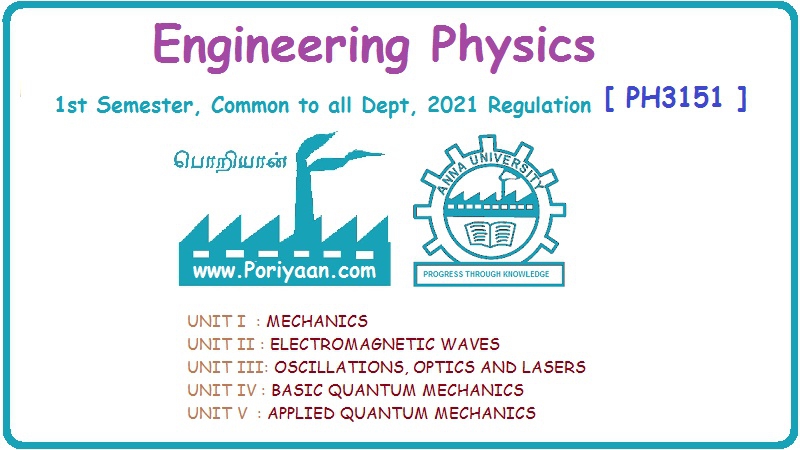Engineering Physics: Unit II: Electromagnetic Waves
Producing electromagnetic waves
Hertz experiment
It follows from Maxwell's equations that electromagnetic radiation occurs whenever electric charge accelerates.
PRODUCING ELECTROMAGNETIC WAVES It follows from Maxwell's equations that electromagnetic radiation occurs whenever electric charge accelerates. Let us consider a capacitor like arrangement as shown in fig. 2.9. Here, A and B are two conducting rods. They are separated by a distance ‘d'. If a voltage source is connected across these rods or wires, a corresponding electric field occurs between the rods. If the two rods get tilted in the following manner, correspondingly the electric field pattern also changes (Fig. 2.10). Further if the two rods (or) wires are tilted in the following manner then, the electric field lines are also changed (Fig. 2.11). Now by replacing the voltage source as a AC voltage source as shown in fig. 2.12, then this arrangement is called as dipole - antenna. A basic design of a electromagnetic wave generator involves this dipole - antenna arrangement. A diagram of one such arrangement is shown in fig. 2.13. In the figure 2.13, thé AC voltage source with a particular frequency ‘f’ is fed to a LCR circuit. The inductor 'L' is a transformer. The secondary of the transformer is attached to the two conducting rods (A) and (B) as shown in the fig. 2.13. As the voltage of the AC source oscillates the electric potentials of the two wires (A) and (B) also oscillate. Due to acceleration of charges, the current flowing through the rod is alternating or it periodically changes its direction. So the electrons in the rods are constantly accelerated and deaccelerated when the direction of the current changes. As the current oscillates, the electric field at the antenna oscillates. So an electromagnetic wave propagates as shown in fig. 2.14. As the charges undergo harmonic motion in the rods or dipole wires at a frequency to the frequency of the AC voltage source Thus, whenever an electromagnetic wave frequency 'f’ is observed, then it must be generated by an electromagnetic oscillator that oscillates at the source frequency ‘f’. Most of the dipole antennas have a total length of λ/2. Here λ is the wavelength of EM. Maxwell's prediction was experimentally confirmed by Heinrich Rudolf Hertz in 1888. The experimental set up used is shown in fig. 2.18. It consists of two metal electrodes which are made of small spherical metals. These are connected to larger spheres and the ends of them are connected to induction coil with very large number of turns. This is to produce very high electromotive force (emf). Since the coil is maintained at very high potential, and air between the electrodes gets ionized and spark (spark means discharge of electricity) is produced. This discharge of electricity affects another electrode (ring type - not completely closed) which is kept at far distance. This implies that the energy is transmitted from electrode to the receiver (ring electrode) in the form of waves, known as electromagnetic waves. If the receiver is rotated by 90°, then no spark is observed by the receiver. This confirms that electromagnetic waves are transverse waves as predicted by Maxwell. Hertz detected radio waves and also computed the speed of radio waves which is equal to the speed of light (3 × 108 ms-1).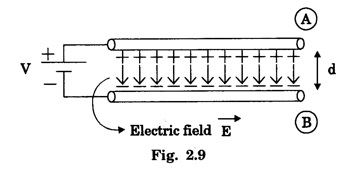
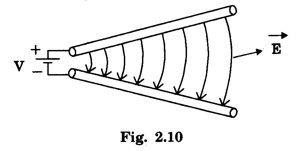
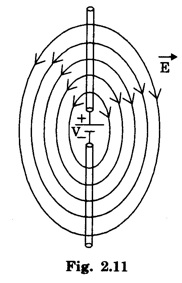
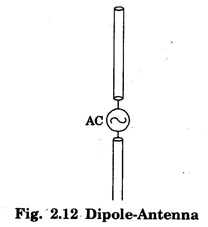
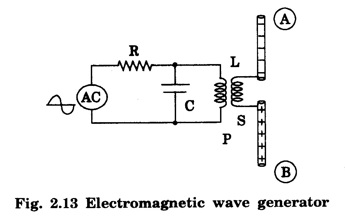
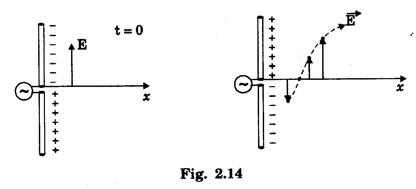
 the frequency of the generated electromagnetic wave is same.
the frequency of the generated electromagnetic wave is same.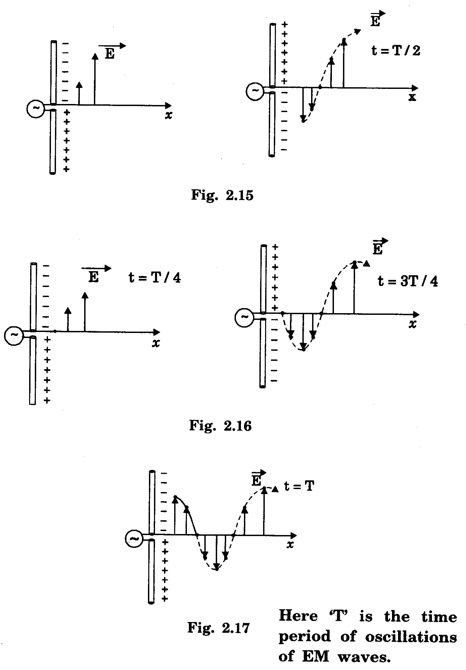
Production of electromagnetic waves - Hertz experiment
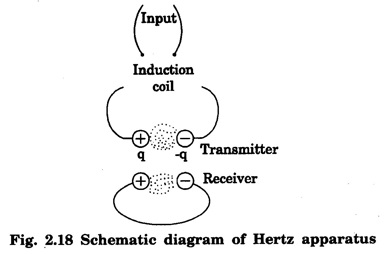
Engineering Physics: Unit II: Electromagnetic Waves : Tag: : Hertz experiment - Producing electromagnetic waves
Related Topics
Related Subjects
Engineering Physics
PH3151 1st semester | 2021 Regulation | 1st Semester Common to all Dept 2021 Regulation
